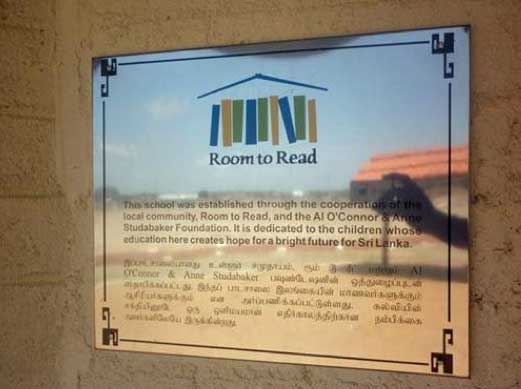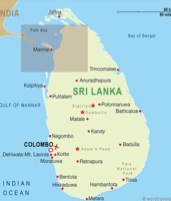Veppankulam School Established June 22, 2011
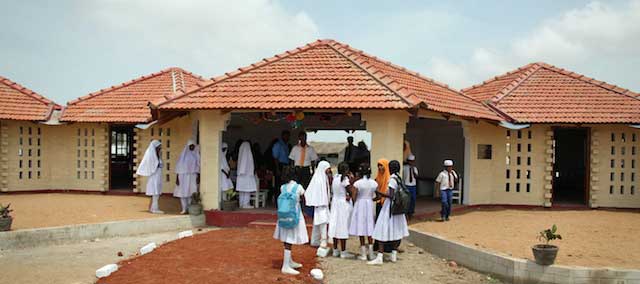

The New School!
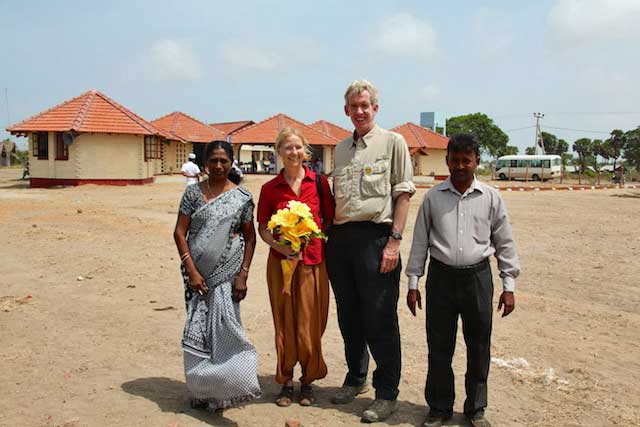
OFA's Al & Anne in front of the School
Veppankulam Community Profile
Veppankulam Village is located in Mannar District, which is located in northwestern Sri Lanka. This district, one of five administrative districts in the Northern Province, is located in northwestern Sri Lanka. It covers 2,002 square kilometers, approximately 3% of the total land area of Sri Lanka. Geographically, the bulk of Mannar lies within the arid and dry zone. High temperatures and low rainfall characterize the climate. The monthly temperatures range between 26.5°C and 30.0°C, with highs normally recorded between May and August. Mannar receives nearly 60% of its rainfall during the northeast monsoon, which lasts from October through December. The land area is relatively flat and sits at low elevations. Across the region's gently undulating terrain, rainwater is stored in tanks and used for irrigation of arable land. Crop cultivation (primarily paddy), fisheries, and animal husbandry support most people in Mannar District. Employment opportunities in the district are highly seasonal, and there are no institutional facilities for tertiary education. The district is inhabited by members of various communities, though the Tamil-speaking community is the most prevalent.
The last thirty years of conflict in the region have resulted in the displacement of large segments of the area's population. War has destroyed the region's infrastructure, displacement has scattered former communities, and the jungle has swallowed previously populated areas
The last thirty years of conflict in the region have resulted in the displacement of large segments of the area's population. War has destroyed the region's infrastructure, displacement has scattered former communities, and the jungle has swallowed previously populated areas
Veppankulam Need for Support
Before the conflict in Sri Lanka began, this school offered classes up to 12th grade. Today, the school offers classes up to 11th grade. Classes are currently held in two temporary structures (160 and 64 square feet, respectively). This space is not sufficient for classroom activities, and the buildings are not child friendly. The junior and senior classes are taught together owing to lack of space. As a result, the classes are overcrowded and students do not receive the individual attention they need. In addition, the school lacks basic water facilities, leading to poor sanitation. Many parents choose to keep their children at home due to the poor condition of the school. Under the Government’s rehabilitation and resettlement program, the Department of Education asked Room to Read to help provide a new building at this school.
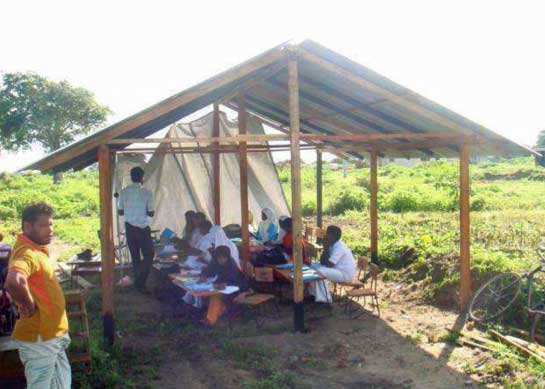
A former Classroom
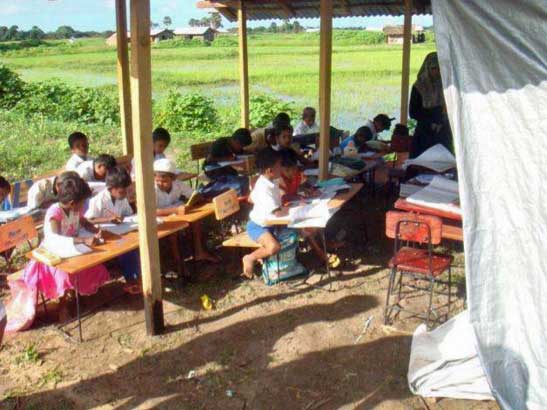
The prior building offered little protection from the weather.
The School Project
The new primary school building is approximately 2350 square feet. The building design was based on the child friendly concept developed by UNICEF. This design facilitates the child-centered teaching methodology. The new building is constructed with cement block walls, a cement floor, and a clay-tile roof mounted on a timber frame. There are four closed classrooms, one open classroom, and a teacher's room. The building is an attractive addition to the community. The classrooms have built-in cupboards, which the teachers use for displaying various educational materials donated by Room to Read. Room to Read has provided 200 student desks, 200 student chairs, 5 teacher desks, and 5 teacher chairs.
COMMUNITY/SCHOOL CONTRIBUTION TO THE PROJECT:
- Donation of land by the Department of Education
- Clearing of site and excavation of foundation by villagers
- Unskilled labor for construction work provided by parents
- Roof covering installed by community members
- Toilet pit excavation done by community
- Construction management and maintenance by community
OPPORTUNITY FOR ALL and ROOM TO READ CONTRIBUTION TO THE PROJECT:
- School design, project management, and technical support and supervision
- Funds for school construction
- Interior furnishings, including desks, chairs, chalkboards, cupboards, and other library supplies
- Construction training for community members
COMMUNITY/SCHOOL CONTRIBUTION TO THE PROJECT:
- Donation of land by the Department of Education
- Clearing of site and excavation of foundation by villagers
- Unskilled labor for construction work provided by parents
- Roof covering installed by community members
- Toilet pit excavation done by community
- Construction management and maintenance by community
OPPORTUNITY FOR ALL and ROOM TO READ CONTRIBUTION TO THE PROJECT:
- School design, project management, and technical support and supervision
- Funds for school construction
- Interior furnishings, including desks, chairs, chalkboards, cupboards, and other library supplies
- Construction training for community members
The photos below show the progress made through early April, 2011. Things look good – with a few more months of concerted effort, it will be complete! This is a true team effort engaging parents and local community members in the construction process to ensure their children have a new and improved learning environment. Daily progress is monitored by a local School Construction Committee with guidance from Room to Read's local team to ensure that we are providing the students with a safely constructed school.
In 1990, more than 400 students were enrolled in this school. When the war broke out, these students were displaced. Many of us were directly affected by the war, losing our homes, our land, and our loved ones. We lost the land that once supported our families. After the war, the government helped us to resettle on our land. However, they did not have the funds to provide a new school building, so they constructed a temporary shed. This shed was blown away during the monsoon season, and again there was no shelter for the children. But with the intervention of Room to Read we have a very good building to house the children and carry out teaching activities. We are really thankful to the donors and Room to Read for helping us resettle on our lands and educate our children.
- Mr.Mufthi, the school principal and president of the school construction committee
School Construction
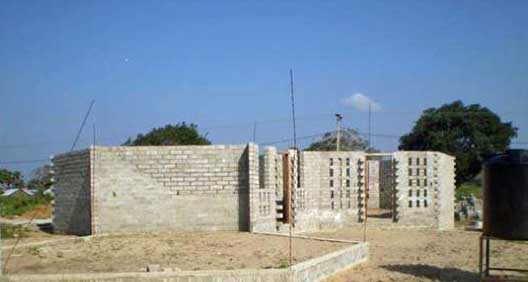
View of the school under construction.
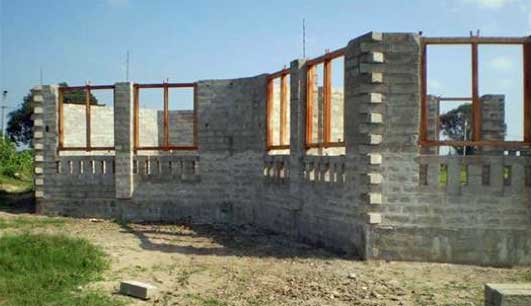
Another view of the work in progress.
Opportunity For All Site Visit, 2011

OFA's Al O'Connor visits with students

OFA's Anne Studabaker with Students
